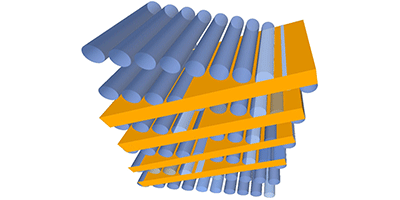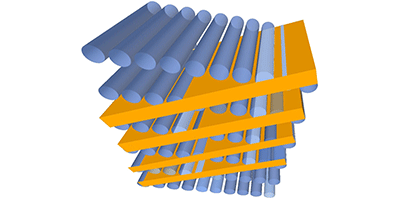Hall Effect in Quasi-1D Conductors
Quasi- D organic conductors are made up of an array of long molecular strands that confine the flow of electrons to essentially one dimension. This reduced dimensionality results in unique behaviors, such as angle-dependent magnetoresistance. New experiments with a particular quasi- D organic conductor have revealed an unexpected Hall effect. As reported in Physical Review Letters, the characteristic Hall resistance oscillates as the orientation of the magnetic field is rotated with respect to the conductor’s lattice structure.
The Hall effect occurs when a magnetic field is applied perpendicular to the current flowing in a material. The magnetic force causes charge carriers to accumulate on the sides of the material, resulting in a transverse voltage. If the charge carriers are confined to two dimensions, the Hall effect becomes quantized, in that the Hall resistance (the ratio of transverse voltage to longitudinal current) takes on discrete values.
One would not expect a Hall effect in a truly one-dimensional conductor. However, Kaya Kobayashi of Aoyama Gakuin University in Kanagawa, Japan, and collaborators have discovered a Hall-like response in the quasi- D organic conductor (TMTSF) . They placed single crystals of this conductor in a -tesla magnet and measured the transverse voltage as current flowed along the molecular strands. When the team varied the angle between the magnetic field and the crystal lattice, the Hall resistance oscillated from positive to negative values, crossing zero at so-called “magic angles.” These angles correspond to lattice planes that connect a molecular strand to its nearby neighbors. To explain this novel Hall effect, the researchers assume the magnetic field excites an orbital resonance that allows electrons to skip between different strands. – Michael Schirber





